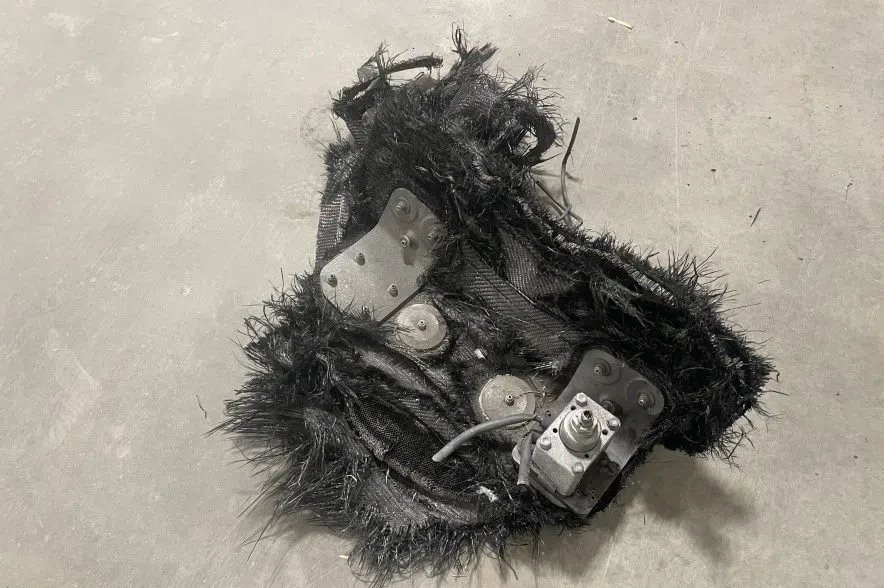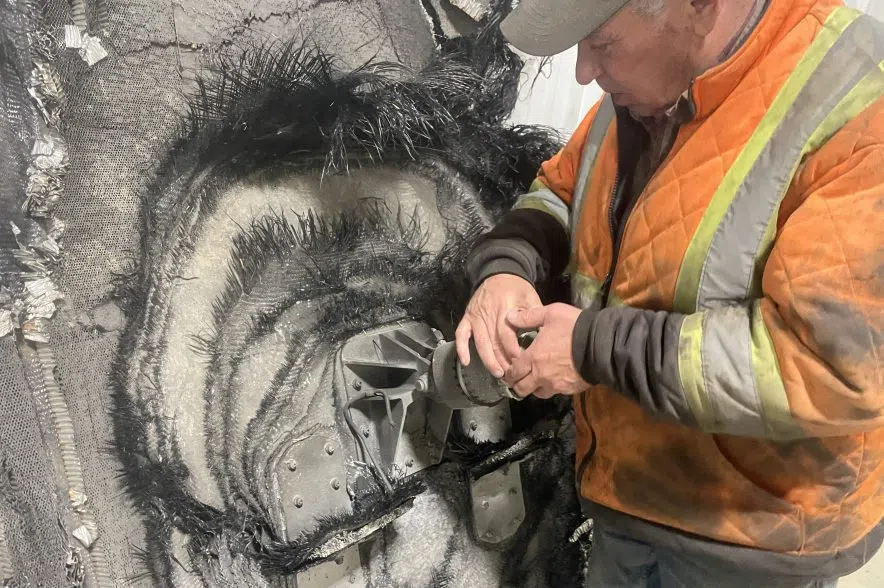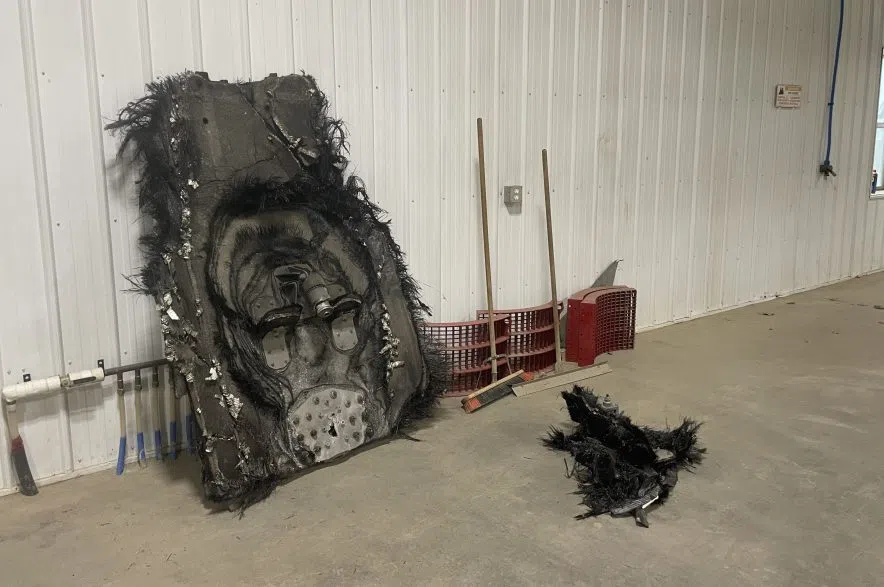A Saskatchewan farmer is experiencing a situation that happens once in a blue moon.
Barry Sawchuk farms near Ituna, northeast of Regina, along with his three sons.
Near the end of April, Sawchuk and his son were checking the fields.
“We were just field scouting,” he said. “My son and I were driving around before seeding on April 28, and we came across something that looked like a piece of garbage . . . We pulled over to pick it up, and it ain’t no garbage.”
Sawchuk said he found a large black object six feet tall and four feet wide, made of fraying carbon fibre and aluminum honeycomb. He said it weighs around 98 pounds.
When he later learned that the object was likely a part of a rocket, Sawchuk said he wasn’t exactly shocked.
READ MORE:
- Northern Lights dance across Saskatchewan skies
- Major geomagnetic storm associated with solar flares hitting all of Canada
- Solar eclipse blots out sun in rare astronomical event visible in Sask.
“We had a real good inkling,” he said. “We called it space junk right away.”
Another smaller piece of space junk was found nearby a few days later by Sawchuk’s son. They’d spotted it a few days before, but didn’t pick it up because they assumed it was a bird.
“They just thought it was a goose standing there,” Sawchuk said with a laugh.
The second piece was much smaller than the first, only weighing 10 pounds.
A smaller piece of aircraft junk was seen a few days before by Sawchuk’s family, but it was originally thought to be a goose. (Gillian Massie/980 CJME)
After an interview ran in Ituna’s local newspaper, a few of Sawchuk’s neighbours found similar objects in their own fields. Sawchuk said pieces of junk have been found across an area of about 28 miles.
Sawchuk said he hopes to sell the pieces – if he can – and put some of the money towards Ituna’s new rink.
Since the space junk landed, Sawchuk has been in touch with many who were curious about the objects, including the federal government and Canadian Space Agency.
Sawchuk said Dr. Samantha Lawler, an associate professor of astronomy at the University of Regina, was the first person to identify what fell in his field.
Lawler collaborated with colleague Jonathon McDowell, an astrophysicist at Harvard who tracks space launches.
McDowell found that the burnt-up space trash was likely apart of a SpaceX Dragon spacecraft. In February, the spacecraft returned to Earth carrying four passengers from the International Space Station.
Sawchuk hopes to sell the spacecraft pieces and use some of the money to help pay for Ituna’s new rink.(Gillian Massie/980 CJME)
McDowell identified that part of the trunk section of the spacecraft is what landed in Sawchuk’s field. Lawler said the trunk is unpressurized cargo space of the SpaceX Dragon that gives power to the capsule during flight.
The trunk is supposed to burn up when it hits the atmosphere, but that isn’t always the case.
“Why this one particular piece didn’t burn up, I don’t know,” Sawchuk said.
Part of Lawler’s research has been dedicated to space junk and its effects on astronomy and atmospheric chemistry.
“I’ve been yelling about this for five years, and now a piece of junk fell an hour away from my house,” Lawler said. “That’s crazy. It’s literally hitting close to home.”
980 CJME reached out to SpaceX for comment.
–with files from the Canadian Press.














